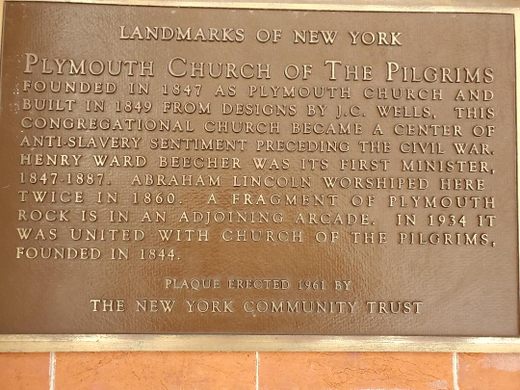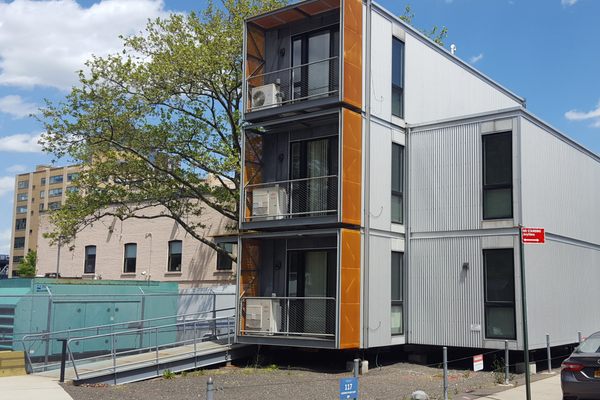Plymouth Church of the Pilgrims
The Underground Railroad passed right through this historic Brooklyn Heights church.
Founded in 1847, Plymouth Church was started by 21 transplanted New Englanders who believed in equality, fellowship, and abolition. At its helm was the famed pastor Henry Ward Beecher.
This simple, barn-like brick church, designed by Joseph C. Wells, was built to replace the original structure, which was destroyed by fire in 1849. During the 1850s, the church became an incredibly important hub of anti-slavery activities. The dynamic Beecher became known throughout New York for his mock “auctions.” At these events he urged congregants to buy enslaved people their freedom, instead of the other way around. Not surprisingly, Plymouth was a crucial stop on the Underground Railroad. In 1860, Abraham Lincoln declared his stance against slavery during a speech at the church. Many believe that this rousing speech is what clinched Lincoln’s nomination to be the presidential candidate for the Republican Party.
Numerous important speakers came to Plymouth over the years. They included Sojourner Truth, Frederick Douglass, Clara Barton, Mark Twain, Horace Greeley, and William Thackeray. The church was also often filled with joyful singing, and in 1855, Plymouth published the first hymnal that featured words and music printed on the same page.
Behind the pulpit and organ is an anonymous white door that leads to a narrow secret staircase. Underneath the church is a system of chambers and tunnels, that is said to be the hiding place for people escaping slavery. Perfectly located near the East River a few blocks away, Plymouth Church was such an important stop on the Underground Railroad it was known in secret talk as the “Grand Depot.” Today, tours of the hidden sanctuary can be arranged through the church itself.
After Beecher’s death, he was succeeded by lawyer-turned-minister Lyman Abbott and then by Newell Dwight Hillis. In 1934, the church merged with the nearby Church of the Pilgrims. It continued to be a hub of progressive ideals. In 1963, Martin Luther King spoke at the pulpit, giving a rousing speech that many say was very reminiscent of his famed “I have a dream” speech, which he would deliver a few months later.
The church was added to the National Register of Historic Places in 1966. It continues to be a place filled with both worship and social activism.
Know Before You Go
General public tours are held most Sundays at 12:30 p.m. after the worship service in the Sanctuary.
























Follow us on Twitter to get the latest on the world's hidden wonders.
Like us on Facebook to get the latest on the world's hidden wonders.
Follow us on Twitter Like us on Facebook